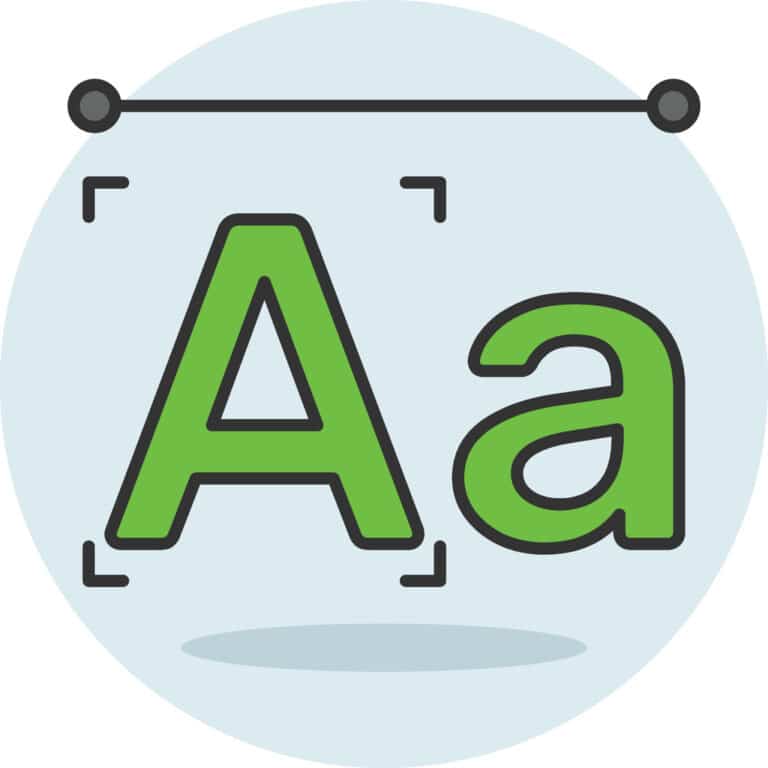Did you know that something as small as website font sizes can have a huge impact on website readability and user experience?
Choosing the right website font size will help make sure your website’s content is easy to read, inviting, and attractive. But how do you decide which website font size works best for your website?
Whether you’re heading into website design for the first time or are looking for a website font size refresher, this blog post will help you understand the basics of website font size and why it is important when creating website content.
We’ll look into website font sizes in terms of readability, accessibility, and SEO. We’ll also be taking a look at how to pick website font sizes for the different website content types.
Ready? Read on to find out more about website font sizes and how to ensure your website’s content looks great!
What are website font sizes?
Website font sizes refer to the size of the text displayed on website pages. Font sizes are measured in points, which are a measurement of type size in the printing industry, and correspond to the height of letters. The most common website font sizes range from 12 – 36 points.
Why is font size important in web design?
Now that you know what font sizes are in web design, you might be asking, why is it important? Here are a few reasons why website font size is so important:
Readability
Text that is too big or too small might be hard to read and can cause website visitors to leave your website quickly. Smaller font sizes can also strain readers’ eyes and make it harder to scan website content, which again, can lead to website visitors leaving. Remember, you’ll want to work towards having a good bounce rate so website font size plays an important role here.
Accessibility
Website font sizes are also important for website accessibility and making sure visitors can read website content easily. A website font size that is too small might make it hard for people with visual impairments or impaired reading to read website content easily, while a website font size that is too big can also be difficult to read.
SEO
Website font size is important for website SEO. Search engine crawlers assess how user-friendly a site is and they will flag a website that uses font sizes under a certain number because that website lacks accessibility for users. This lack of accessibility will cause websites to rank much lower in SERPs.
How to choose the right font size for your content

Now that you understand why website font size is important and how it affects website readability, accessibility, and SEO, let’s look at how to pick website font sizes depending on the type of website content.
First, we are going to look at three different kinds of content: desktop text-driven pages, desktop interaction-driven pages, and mobile website content.
Text-driven website pages are pages with a lot of website text, such as blog posts or articles. Interaction-driven website pages involve more than just words, such as website navigation menus and website forms. When visiting this kind of site, a user will be hovering and clicking on page elements. And mobile website content is just what it sounds like – website content designed to be viewed on mobile devices like phones and tablets.
Text-heavy pages
For text-driven website pages, website font sizes should generally be on the larger side. This means font sizes between 16 – 18 points, and even up to 20. This size will ensure website readability and make sure website visitors can easily read website content without having to strain their eyes or zoom in too much.
Interaction-heavy pages
Interaction-driven website pages require slightly smaller website font sizes. The appropriate font size for these pages should generally be around 14 – 16 points so website visitors can easily click, hover and interact with website pages without any issues.
Mobile content pages
Next up is mobile website content. Mobile website font sizes should be at least 16 points, though you may want to go bigger depending on the readability of the font your choose. This website font sizing will ensure readability on mobile devices and website visitors don’t need to zoom in too much to read website content.
Different website elements and their font sizes
Now that we’ve looked at website font sizes for website content, let’s dive into website elements and their font sizes.
Titles (H1)
When it comes to titles, also known as H1s, website font size should generally be between 28 – 36 points. This website font size will ensure website titles really stand out and website visitors can easily find the section or article they are looking for.
Headings (H2, H3, H4)
Headings, also known as H2s, H3s, and H4s, should generally be between 18 – 24 points. This website font size will make sure headings are noticeable but not too overwhelming.
Body
For website body text, body font size should generally be between 14 – 18 points. This website font size will make sure website visitors can read website content without having to strain their eyes or zoom in too much.
CTA Buttons
Finally, website font size for website CTA (call to action) buttons should be between 16 – 20 points. This website font size will make sure website visitors can easily click on website buttons without any issues.
Font size guidelines best practices

When it comes to website font size, there are a few best practices you should follow:
Stay consistent
When setting website font sizes, it is important to stay consistent. This means all website headings should have about the same size font, website titles should also have the same size font, and website body text should all be about the same website font size. This website font size consistency will ensure website visitors can find information easily.
Test website font sizes across devices
You should also make sure website font size looks good across all devices. This means you should check website font sizes on mobile, tablet, and desktop devices to make sure website visitors can easily read website content without any issues. Font size should usually scale down for tablet and mobile breakpoints. For instance, if a headline is 36 points on desktop, it might scale down to 26 on a mobile device.
Use font sizing to capture attention
Keep in mind, website font size isn’t just about readability. You can also use website font size to capture website visitor attention. For example, larger website font sizes for website titles and website CTA buttons can help draw website visitors in and encourage them to click on website buttons.
Don’t forget line spacing
Finally, website font size should also be paired with line spacing. Line spacing is the space between website lines of text and it helps website visitors easily read website content. A good rule of thumb when it comes to line spacing is that it should be at least 1.5 – 2 times the website font size.
Final thoughts
In the world of web typography, website font size is an important factor for website usability and website readability.
Website font size should be carefully chosen depending on the type of website content and website element, as well as tested across devices. It is also important to stay consistent with website font sizes in order to create a cohesive website design. Moreover, website font size should also be paired with website line spacing to ensure website visitors can easily read website content.
By following these website font size guidelines, you will make sure website visitors have the best website experience possible!
Frequently Asked Questions
What is line length?
Line length is the character length of an individual line of text from one end of the screen to the other. Line length should generally be between 45 – 90 characters per line to ensure website visitors can read website content without any issues.
What is default font size?
The default website font size is 16 points. This website font size should generally be used for website body text in order to ensure website visitors can easily read website content.
What is root font size?
Root website font size is the website font size set in CSS which will be used as the base website font size for website elements. This website font size is generally 16 points but can vary depending on website design.
What is line height?
Line height is the website spacing between website lines of text. A good rule of thumb when it comes to website line height is that it should be at least 1.5 – 2 times website font size.
Is 10 pt font too small?
Yes, a website font size of 10 points can be too small for website visitors to read website content. Generally, website font size should be at least 12 points in order to ensure website readability.
What is secondary font size?
Secondary website font size is used for website elements such as website headings, website titles and website CTA buttons. This website font size should be larger than website body text in order to capture website visitor attention.




